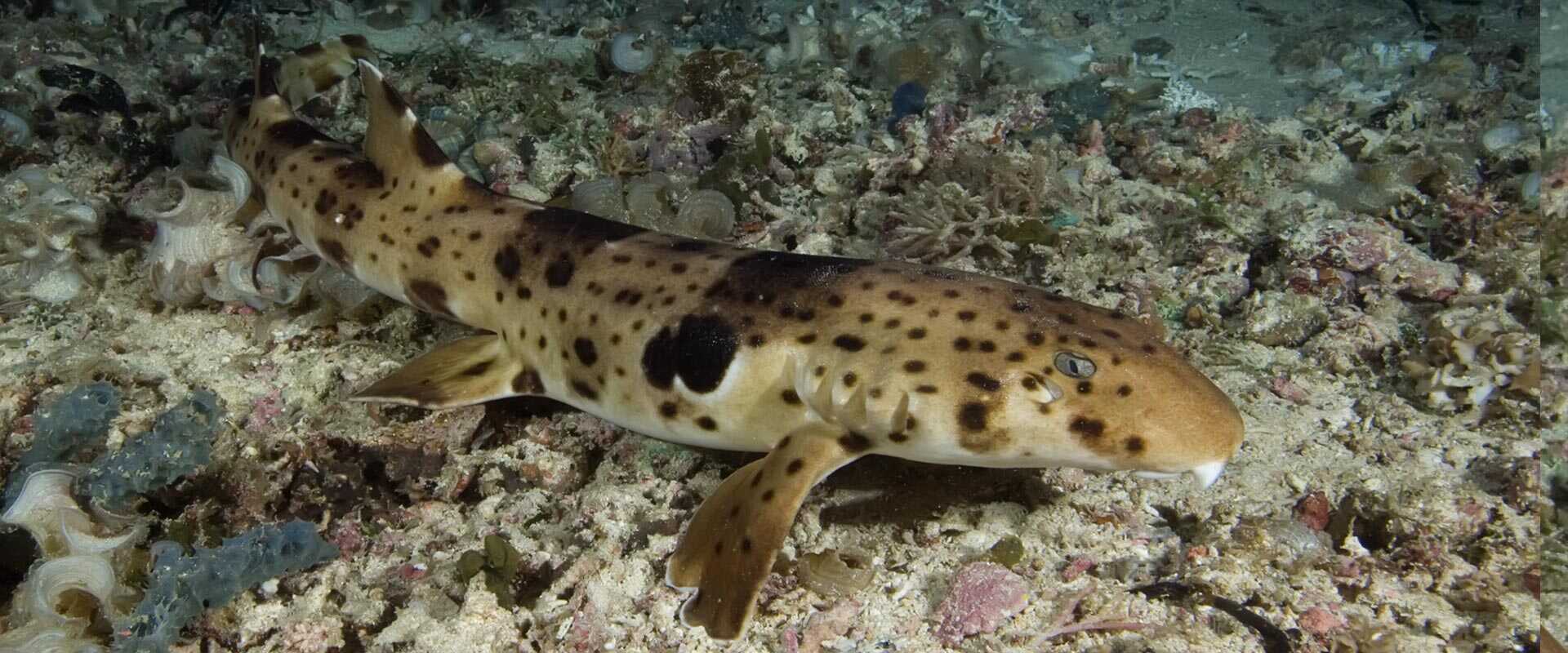Recent study about Extinction Risk of the BHS’s Walking Sharks by MV Erdmann & Abraham Sianipar
Most divers who have visited the Bird’s Head will be familiar with the charismatic “walking sharks” that are found throughout the BHS. Also known as epaulette sharks, these small bottom-dwelling sharks, but not to be confused with the similar looking catsharks (see below, bottom image), generally prefer shallow reef flats and can be seen at night “walking” around on their paired pectoral and pelvic fins, poking their heads under coral heads in search of their prey – which includes snails, clams, crabs, and small fishes. Walking sharks are only found around the islands of New Guinea and Australia, and are in fact the youngest known evolutionary radiation of sharks on the planet! Of the nine species known to exist, six are found in Indonesia, with four calling the Bird’s Head home: Hemiscyllium freycineti (known only from Raja Ampat), H. henryi (known only from Fakfak and Kaimana), H. galei (known only from Cendrawasih Bay), and H. strahani (known from the northern coast of New Guinea, from the Mamberamo River outlet southeast to Madang in PNG).

Freycinet’s Epaulette Shark (Hemiscyllium freycineti). Known only from the Raja Ampat Islands, West Papua, Indonesia
Study Abstract:
The Epaulette sharks (or walking sharks) in the genus Hemiscyllium comprise nine species, of which two are classified as Near Threatened and five as Vulnerable on the IUCN Red List. Here, we summarize the current taxonomy, biology, IUCN Red List status, threats, and conservation status of the Epaulette sharks. We find that the Epaulette sharks are facing direct threats from local, small-scale fisheries and indirect threats of habitat loss and degradation from climate change, coastal development, and industrial effluents. Many species benefit from protection in the extensive Marine Protected Areas in the Raja Ampat region. But in order to effectively conserve this unique radiation of sharks, priority must be placed on protecting the shallow near-shore habitats where they live and carefully managing the small-scale fisheries that have the potential to cause local extinction due to low population numbers and extremely restricted geographic ranges.
Read the complete study.

The Spot-belly Catshark (Atelomycterus erdmanni), found in eastern Indonesia, is often confused with the “walking sharks”
Watch a short movie of a Bamboo/Epaulette shark as it “walks” over the substrate. https://youtu.be/AnbMCyBPBs4.
For further reference on endangered species, including sharks, see IUNC Red List.
Dr. Mark Erdmann is Vice President of Asia-Pacific Marine Programs for Conservation International
Abraham Sianipar is a Master’s Student, Murdoch University, Perth, Australia







































